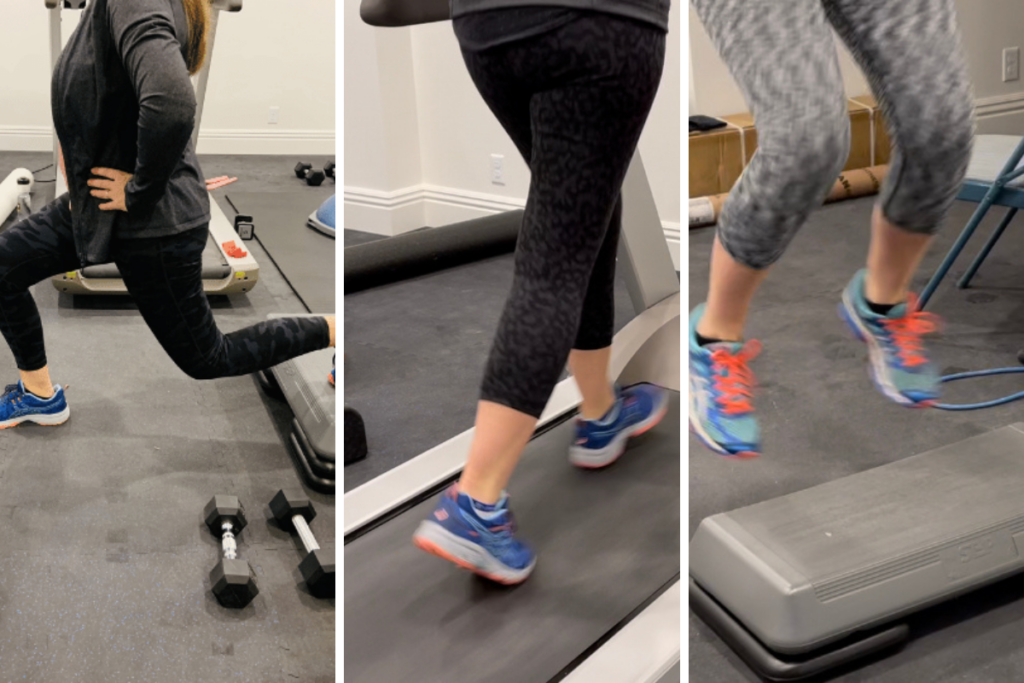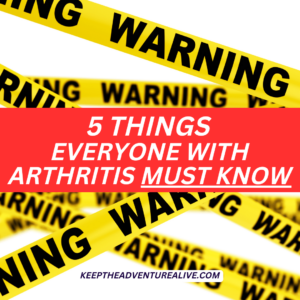Most degenerative meniscus tears, meaning those that come without a specific injury, have the capacity to actually heal themselves! When looking at how to heal a torn meniscus naturally, there are a few things that will make you successful. Non-operative management is possible, with the right movement program, inflammation control, and regaining your confidence. Surgery is considered in some circumstances and I’ll discuss how you know if your torn meniscus requires surgery below.
Patient story
A past patient of mine first sought out treatment due to knee pain that came on rather suddenly and didn’t seem to go away.
Her knee did not feel stable and she was having pain that kept increasing. She began avoiding activity because she was scared she was making things worse.
She saw her primary care doctor who then referred her to an orthopedic surgeon. The surgeon wanted to go ahead with surgery for her torn meniscus but she got a different opinion which actually advised against surgery.
She had luck with PT but was looking to return back to her normal activities. She was still having some residual pain with higher level activities.
We started working together, talking through the fact that some pain and discomfort is okay. It had come to light that she had become fearful of movement. She avoided certain activities in anticipation of pain.
No one had ever mentioned what type of pain was actually “okay”. As humans, we are programmed to avoid pain, almost at any cost. This can actually be detrimental at times, especially with chronic pain.
It was time to build her confidence in the fact that she wasn’t causing more meniscus or knee damage with every twinge of pain she felt.
She started becoming less fearful of movement. She started getting stronger, a feeling she hadn’t felt in a long time.
She was even able to start running again, which was huge! She is back to playing tennis and mountain biking with her e-bike.
She is no longer limited by her pain from her meniscus. She also knows how to manage pain flare ups and feels more confident about what is best for her knee, instead of guessing.
She has been able to get back to lunging, jumping, and even running again after building strength in the right areas.
For her, she wasn’t sold on surgery and wanted to avoid it at all costs when she started having pain. Now she is thriving because she learned how to treat her torn meniscus naturally by taking action.

Options for meniscus treatment
If you have a degenerative meniscus tear, you usually have a few options when it comes to treatment. This list may not always be fully explained to you at your appointment so I want you to know the facts.
The options for meniscus treatment include:
- Physical therapy or medical exercise
- Meniscus repair (usually arthroscopic): cleaning of meniscus
- Meniscectomy (partial or full, arthroscopic or open): removal of meniscus, partial and arthroscopically is the most common procedure
Researchers have been comparing these three things for many years to decide which is the best. When looking at how to heal a torn meniscus naturally, one of the best bets is on physical therapy and exercise.
When looking at how to heal a torn meniscus naturally, exercise and physical therapy can be one of the most powerful ways to do so.
Let’s take a look at what the research says about meniscus healing.
Is exercise effective for a torn meniscus?
I took a deep dive into the research to find out the true possibilities of healing a torn meniscus naturally. Here’s what was found.
- In a study of 102 people with knee pain and a degenerative horizontal tear of the posterior horn of the medial meniscus- average age 53.8 years old- half got meniscectomy surgery and half got physical therapy/strengthening exercises. BOTH groups had similar pain reduction, improvements in function, and satisfaction after a two year follow up.
- Another study looked at those receiving physical therapy after partial meniscectomy and supervised exercise alone, without surgery. Interestingly, those that received surgery first did not have any better results than those that just did exercise. Both groups had “decreased knee pain, improved knee function and a high satisfaction”
- A systematic review analyzed 6 different studies around operative versus non-operative meniscus treatment and found: “The results of this systematic review strongly suggest that there is currently no compelling evidence to support arthroscopic partial meniscectomy versus physical therapy.”
Are you starting to see a pattern here?
In most circumstances, the Arthroscopic Partial Meniscectomy is no better than traditional exercise alone when it comes to looking at pain and function.
Resources on how to heal a torn meniscus naturally are critical to your success as surgery may not be the most efficacious option anyways.
The key here is knowing which exercises are not going to flare up your pain and will actually bring you the same benefits as found above.
Before I dive into how to heal a torn meniscus naturally, I do want you to know there are certain circumstances where surgery is recommended and these criteria below can help you decide.
Should you get meniscus surgery?
A very interesting study laid out the parameters when it comes to deciding on surgery, particularly the APM or Arthroscopic Partial Meniscectomy procedure.
“According to the current algorithm of the 2016 ESSKA Meniscus Consensus Project, the messages regarding APM were as follows:
APM should not be considered as the first-line treatment choice;
APM should only be proposed after a proper standardized imaging protocol;
APM can be proposed after three months of persistent pain/mechanical symptoms or earlier in cases with considerable mechanical symptoms;
No APM should be proposed with advanced osteoarthritis on Schuss view.”
This means that you should try other options before jumping the gun to surgery. This is why learning how to heal a torn meniscus naturally is very important.
The new approach to modern surgery is no longer “if it’s torn, take it out” but instead replaced with “Save the meniscus!” which is why you see many surgeons advising conservative treatment first.
It is important to note that conservative management will not work perfectly for everyone and some will have to go and have surgery. I do know many that have found relief following the surgery but also some that have “never been the same”.
Watch this video below to help you with this decision if you are feeling stuck:
How to heal a torn meniscus naturally
If you have a torn meniscus, I am so glad you are here.
Too often, it can be so difficult to decide what to do and where to turn. This overwhelm and confusion can lead to potentially premature surgeries and increased pain.
Here are my top 4 steps to healing a torn meniscus naturally.
Step 1: Find the RIGHT movement
This is hands down one of the most important steps when it comes to your meniscus healing. Movement can be extremely powerful in this situation but you have to make sure you are doing the right things.
Many people try exercise but end up causing more pain or further injury because they aren’t doing the right things.
Muscle strengthening is one of the best ways to improve pain and instability related to an injured meniscus. Strengthening the muscles in your leg truly help to provide support to your knee joint.
Why is muscle support necessary? A meniscus helps to absorb the stress from daily movement to protect your knee. When the meniscus is torn, it doesn’t work as well and more stress goes to the knee. If you have appropriate muscle strength, your muscles can now compensate for some of the lost meniscus function.
So where should you begin? Here is a video example of the 6 best exercises you can try if you have a torn meniscus.
Please be advised, all of these exercises may not feel great to you and that’s okay! It is important to choose 2 or 3 to incorporate into your daily routine.
Step 2: Stay Active
Contrary to popular belief, rest may not be the most important thing in your healing journey. Too often we rest, thinking we are doing our joints a favor but in reality this can lead to more joint stiffness and pain.
Rest may also delay your journey on healing your torn meniscus naturally, leading to potentially requiring premature surgeries.
Minimize the time you are stationary to <2 hours at a time. You will see a dramatic increase in your mobility if you increase the amount of time you are moving throughout the day.
Even simply completing movements when you are sitting can help to reduce joint stiffness and thus decrease pain.
Inactivity can actually lead to muscle weakness, increased irritation, and increased inflammation which leads to difficulty moving around.
If you are unsure where to start in your exercise journey and aren’t sure what movements are safe and which aren’t- the FREE 3 Day Walking Workout Challenge is here to help. You’ll get access to 3 follow along, progressive workouts that show you some of the best movements to help you get started towards regaining your strength, balance, and stamina for walking which also opens the doors to other activities like stair climbing.
Step 3: Use a Knee Sleeve
Knee sleeves can help significantly with improving stability and decreasing pain. They can also help to control knee swelling if it is problematic for you.
I love these because they don’t impede your range of motion and are relatively inexpensive compared to some of the harder braces. Here is my top 11 list of the best knee sleeves.
When looking at how to heal a torn meniscus naturally, these knee sleeves can help with acute pain relief and swelling to allow you to move more freely.
The more reps you are able to do with the right type of exercises, the better off your leg strength and pain levels will likely be!
Warning though, a knee sleeve is not meant to completely relieve knee pain nor is it a solution for meniscus repair on it’s own. It is simply a supplement to help you be more productive with movement throughout the day.
Step 4: Control Inflammation
This can be done in a variety of ways including food, stress management, avoiding overactivity, and getting proper sleep. If you have high levels of inflammation in your body, it can negatively impact healing ability of your meniscus.
Here is a list of the best anti-inflammatory foods to help you get started on your journey as well as my top 15 list of simple ways to control inflammation.
A good rule of thumb is to get at least 7-8 hours of sleep. If you have a hard time sleeping due to pain, you can try heat or ice before you go to bed (make sure you don’t sleep with it though), light movement/stretching, and gentle massage to help with pain flares.
Overactivity can lead to further inflammation so it is important to listen to your body and watch how much activity your joint can handle.
For example, if you walk 30 minutes one day and ontice pain afterwards, try 20 minutes the following day to see if you experience less pain. Continue to modify as needed.
Making the right decision for your meniscus
Whether you decide to go the natural, conservative route or the surgical route, I want you to feel confident in this decision.
You can make the best of both situations and you have to choose what is best for you. Weigh all of your options.
It is possible to learn how to heal a torn meniscus naturally and actually be successful with it. With dedication and consistency you will be able to thrive even with a meniscus tear.
Meniscus tears are very common and there are options for treatment. You don’t have to give up everything you love because of a meniscus tear. Hang in there!
Conclusion
Meniscus tears can affect people differently. Most of the time, surgery or repair is not the first line of treatment as some tears can heal on their own.
Working to support your knee in the best way possible is important. Finding movement to help build muscle strength, controlling inflammation and adding external support can be great priorities to start with.
If you’re looking for the fast track, join in the FREE 3 Day Walking Workout Challenge. It’s perfect for beginners as well as those that may be experiencing pain and are looking for the next step. Check it out by clicking the button below:
Alyssa Kuhn

If you are looking to regain your active life but are unsure where to start, join the revolutionary membership, Adventurers for Life. This is a step-by-step path that not only will help you find pain relief but will help you unlock adventure. You’ll get workouts, tests to pass to make sure you are on the right track, community events and MORE.




